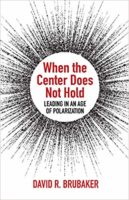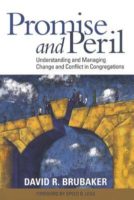When he was running as a third-party vice presidential candidate in 1992, Admiral James Stockdale was widely mocked for asking at the beginning of the VP debate, “Who am I? Why am I here?” The timing of the question was admittedly odd, but the question itself is spot on. Every individual, and every congregation, needs to ask itself such questions periodically. The questions of identity and purpose are essential to effective congregational life.
A well-crafted mission statement incorporates elements of both identity and purpose. For example, “First Downtown Church gathers followers of Jesus to practice loving and serving others.” This simple sentence combines a statement of identity (those who follow the example of Jesus) with a phrase about why the congregation exists (to practice loving and serving others).
A useful vision statement, by contrast, should be aspirational. It expresses what congregational members believe God or the universe is calling them to become and to do. For example, “First Downtown Church strives to be a congregation that reflects the diversity of our surrounding community and prioritizes just relationships.”
Looking Toward the Future
A clear sense of identity and purpose is vital not just for an effective present but also for a hopeful future. Congregations that are unable to articulate their identity and purpose, or that are unwilling or unable to live them out, are unlikely to attract new members or to retain existing ones.
When both identity and purpose are clear and clearly stated, three benefits come to the congregation. First, current members understand who they (collectively) are and why the congregation exists. Second, prospective members have an opportunity to have genuine informed consent about the identity and purpose of the congregation prior to joining. Third, community members can understand the role the congregation aims to fulfill in its broader geographic context.
Re-visioning Essentials
Nearly every congregation I’ve been part of or consulted with the last 40 years had a mission statement and many also had a vision statement. In many cases, however, those mission and vision statements were dated, ignored, or otherwise not owned by current congregational members. The process of revisiting and revitalizing mission and vision begins with the governing board/vestry/session of the congregation committing to do so. Once that commitment is made, there are three essential steps in the re-visioning process:
- Appoint a diverse team to lead the process. The most effective team size is 5 to 7 members, and the team should include lay and clergy, younger and older, and long-term and newer members.
- Listen broadly to the congregation and the community. Many strategic planning processes find ways to listen to congregational members, but fail to also listen to community members. Asking community members how they view your congregation…and what they would like to see from your congregation…is almost always eye-opening.
- Be clear about the difference between mission and vision. Ultimately the re-visioning team will need to revise or draft mission and vision statements. The need for clarity about who we are and why we exist now (mission statement) and who we want to become and why we want to exist in the future (vision statement) is critical. A good mission statement accurately describes the present. A good vision statement inspirationally envisions the future.
However compelling a congregation’s written Mission and Vision statements, they only have value if they are lived out. I encourage congregations to do an annual audit of both statements and the congregation’s success at living into them. This would lead to the following questions at the annual board retreat for First Downtown congregation:
- How are we actually doing in our attempts to follow Christ in our individual and communal lives?
- How are we actually doing at loving and serving others, both within the congregation and within our community?
- How much progress did we make this year in becoming a congregation that reflects the diversity of our surrounding community?
- How have we demonstrated a commitment to just relationships this past year, and where have we fallen short?
If we use the mission and vision statements to interrogate our life together, we are able both to celebrate successes and to identify shortcomings. The resulting insights may lead us to adjust our practices or to revise our mission and vision statements, but either outcome is productive. For congregations, as for individuals, the unexamined life is not worth living.
Questions of Identity and Purpose
A genuine strategic planning process goes well beyond drafting mission and vision statements, and generally includes values statements, goals, and actionable objectives. But the starting point should always be the question, “Who are we, and why are we here?” Every congregation should be able to answer that question, and to recognize that the answers will vary over time. If your vision statement in 2023 is the same as it was in 1973, it’s safe to assume that your congregation has become increasingly irrelevant to its community and its members in the last 50 years.
In an era of declining denominational loyalty, an identity as “Presbyterian,” “Methodist,” or “Mennonite” is no longer sufficient. And “non-denominational” defines a negative, not a positive. To be salient, identity must be both clear and contextual—relevant to your specific congregation and your local community. Likewise, purpose must emerge from the unique needs of your congregation or your community. “To fulfill the Great Commission” certainly sounds Biblical, but does not identify the unique purpose of your local congregation. “Who are you?” and “Why do you exist?” are deeply grounded questions.
Most congregations do not need outside assistance to answer these two questions. What they do require is leaders committed to the process, a diverse group to lead it, and broad opportunities for members of the congregation and community to speak into it. If you haven’t undertaken such a process in the last five years, this would be a good year to start.
David Brubaker has consulted with organizations and congregations in the U.S. and a dozen other countries on organizational development and conflict transformation. He is the author of Promise and Peril, on managing change and conflict in congregations, and When the Center Does Not Hold, on leading in an age of polarization. David serves as Dean of the School of Social Sciences and Professions at Eastern Mennonite University and is a professor of organizational studies.



